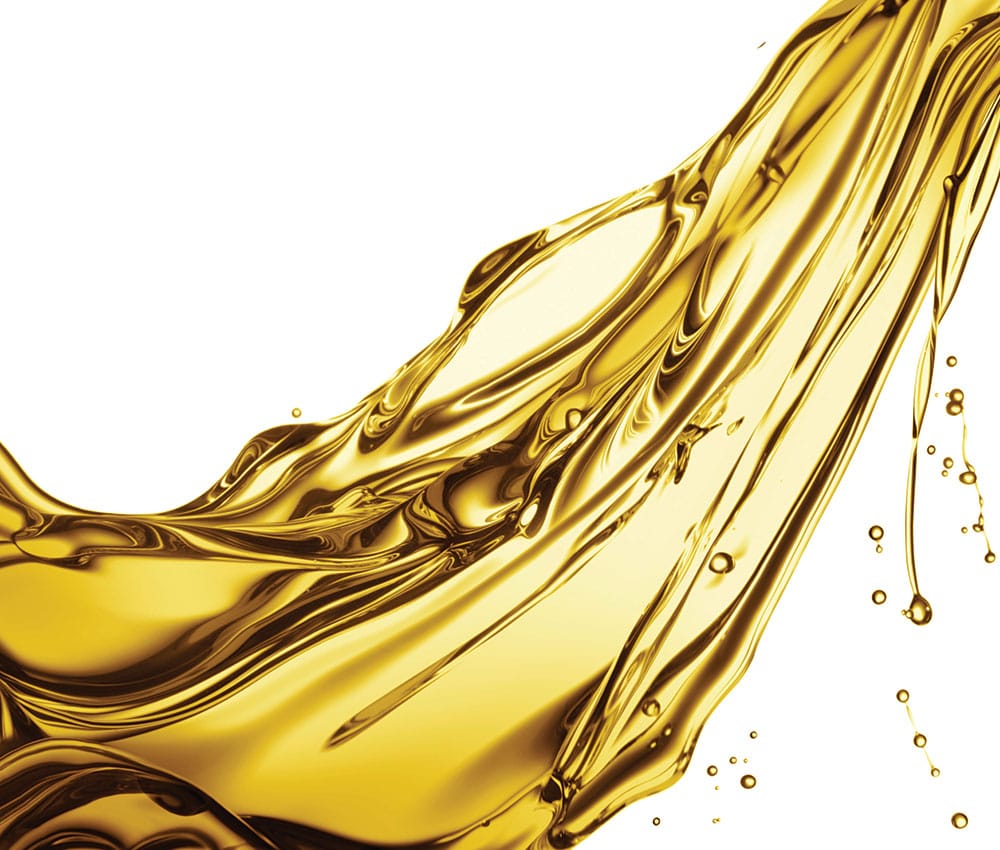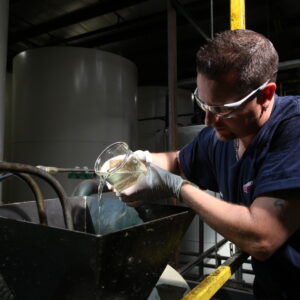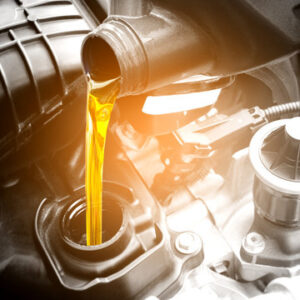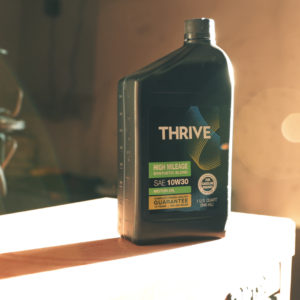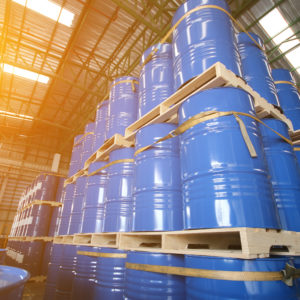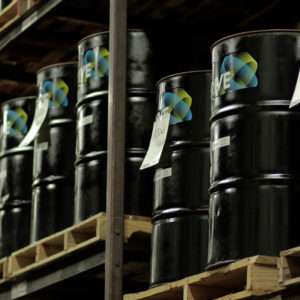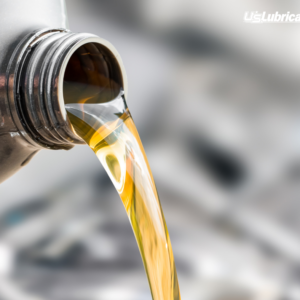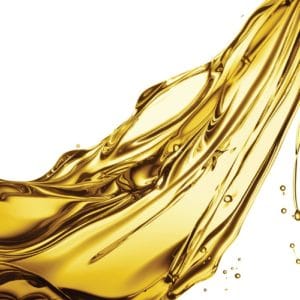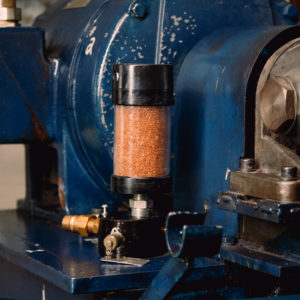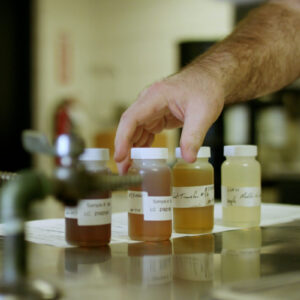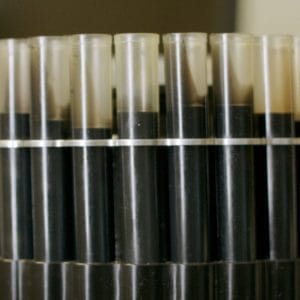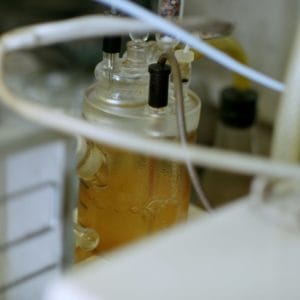Viscosity is perhaps the most important physical property of any lubricant. Viscosity is the property of a fluid, semifluid, or semisolid substance that measures its resistance to flow. The higher the viscosity value, the more the substance will resist flow. Without variance in viscosity, there would be no need for ISO grades, SAE grades, or AGMA numbers. Viscosity can change over time in your machinery and equipment as a result of contamination, oxidation, and mechanical shearing.
Condition monitoring is used to analyze these changes in viscosity, helping to prevent premature failures, optimize drain intervals, identify and correct poor oil distribution practices, and improve lubricant selection. In the context of condition monitoring, kinematic viscosity is commonly measured at 40°C and 100°C. Original equipment manufacturers (OEM) additionally design their lubricant recommendations around these values.
How a viscosity is determined for equipment:
The design of new mechanical components is a long and arduous process that typically includes field trials and controlled stress testing. These trials are completed to test new component designs, investigate lubricant suitability, and determine drain intervals for the lubricant. Viscosity selection and the effects that operating temperature has on the lubricant are investigated during these trials. Once a lubricant, and its viscosity grade and additive type is vetted out, the OEM will recommend it for use with the intent that the end-user will follow viscosity recommendations in their lubricant selection.
Unfortunately, there are several factors that can change the viscosity characteristics of a lubricant over the span of a drain interval.
Three Reasons Viscosity Changes:
- Contamination
- Oxidation
- Mechanical Shearing
Contamination
With viscosity change, contamination in the form of lubricant mixing can be monitored by measuring the kinematic viscosity and referencing the value against the ISO Grade, SAE Grade, or AGMA number.
If a lubricant is measuring higher or lower than expected in the designated viscosity grade, while producing otherwise healthy characteristics in an additive package and Total Acid Number (TAN), then another lubricant of similar composition, but different viscosity grade has been placed in the system. If viscosity and additive characteristics are non-compliant then a lubricant with a different construction may have been added to the lubricating system and could cause catastrophic damage.
Oxidation
Oxidation is a chemical process in which oxygen combines with the lubricant and a chemical reaction occurs, commonly resulting in a viscosity increase. Unfortunately, all lubricants will oxidize over time, but the rate of oxidation is variable. Catalyst in the form of contamination or wear particles commonly found in lubrication systems like water, copper, or dirt can increase the rate of oxidation, elevated temperatures can also increase rates of oxidation. The viscosity increase in the fluid can cause inefficiencies in operation, but also acid propagation that can cause damage to lubrication system components and lead to premature component failures. Condition monitoring that combines analysis of the viscosity and total acid number (TAN) can help monitor oil thickening due to oxidation.
Mechanical Shearing
In engine oils and multi-viscosity hydraulic oils, viscosity modification with polymeric compounds, known as viscosity modifiers or viscosity index improvers, is a regular occurrence. Mechanical shearing of these compounds will reduce the viscosity of the lubricant, which in turn can lead to a reduced oil film at the point of lubrication. The reduction in oil film can cause premature or catastrophic damage to system components, thus monitoring the viscosity to ensure viscosity measurements are within viscosity grade is very important. To monitor mechanical shearing, it may be necessary to monitor both the viscosity at 40°C and 100°C.
Condition Monitoring
Viscosity changes can be easily measured with condition monitoring. Analyzing changes in viscosity can help prevent premature failures due to loss of oil film thickness or inefficiencies due to thickening. This type of condition monitoring can also help to optimize drain intervals, identify and correct poor oil distribution practices, and improve lubricant selection.
About OilChek®
For over 40 years, the U.S. Lubricants’ OilChek® Oil Analysis Program has provided high quality, state-of-the-art analyses of lubricating oil, fuel, coolant and industrial products. The highly automated program provides a thorough examination of your lubricating system complete with written recommendations. We offer support and provide resources for the development, design, and research of manufactured equipment, assuring machine health®.
About the Author:

Andrew Martin
Industrial Product Engineer
Andrew Martin is the Industrial Product Engineer at U.S. Lubricants. Prior to U.S. Lubricants, Andrew was a Project Lead at Pinnacle and received his degree in Mechanical Engineering from the University of Illinois at Urbana-Champaign. Andrew is MLT I/MLA I certified. To learn more or connect you can find Andrew Martin on LinkedIn.


